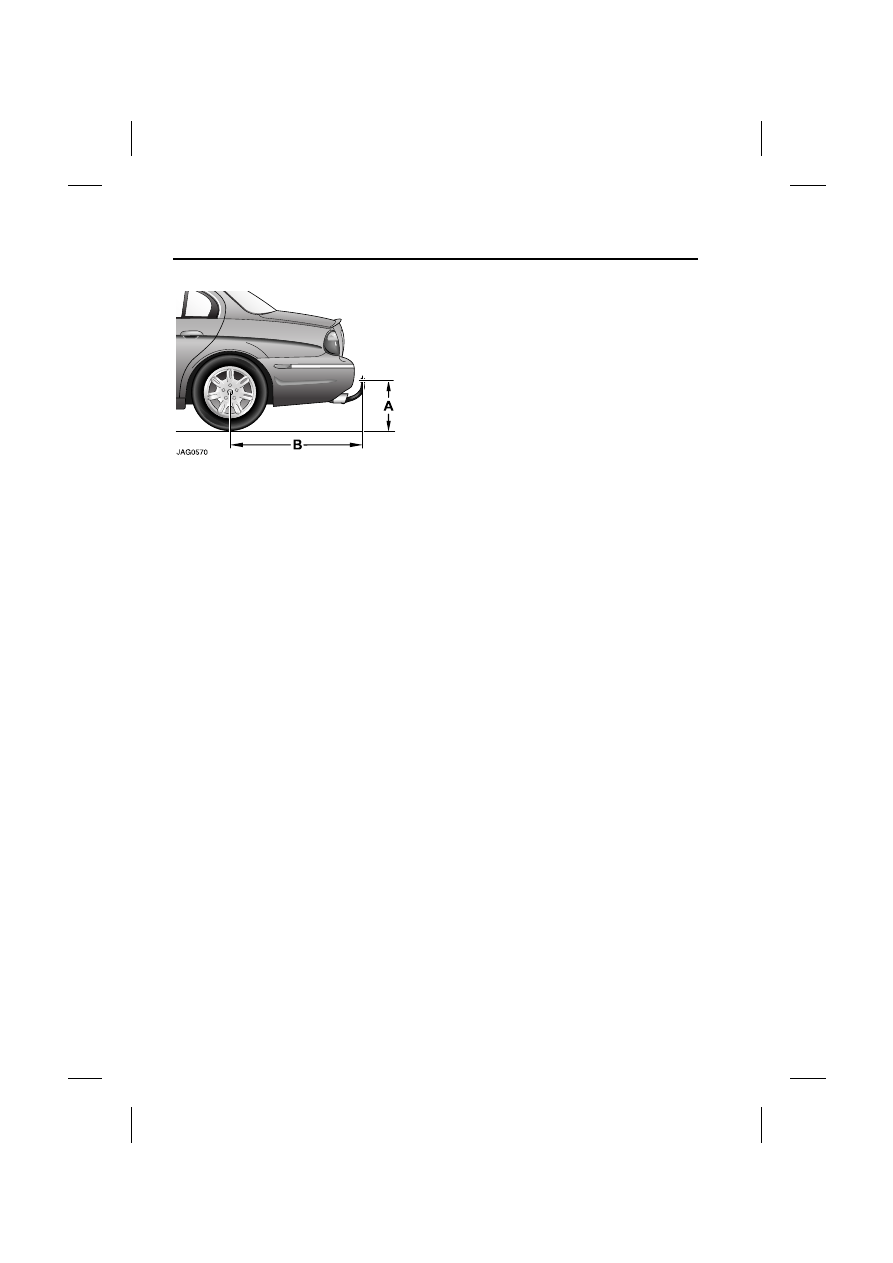Jaguar S-Type. Manual - part 34

Driving Information
144
L
Tow ball center height from the ground at
Gross Vehicle Weight (GVW):
(A) = 37.0 cm to 38.2 cm (14.5 inches to
15.04 inches).
Tow ball center distance from center line
of rear axle:
(B) = 116.5 cm (45.87 inches).